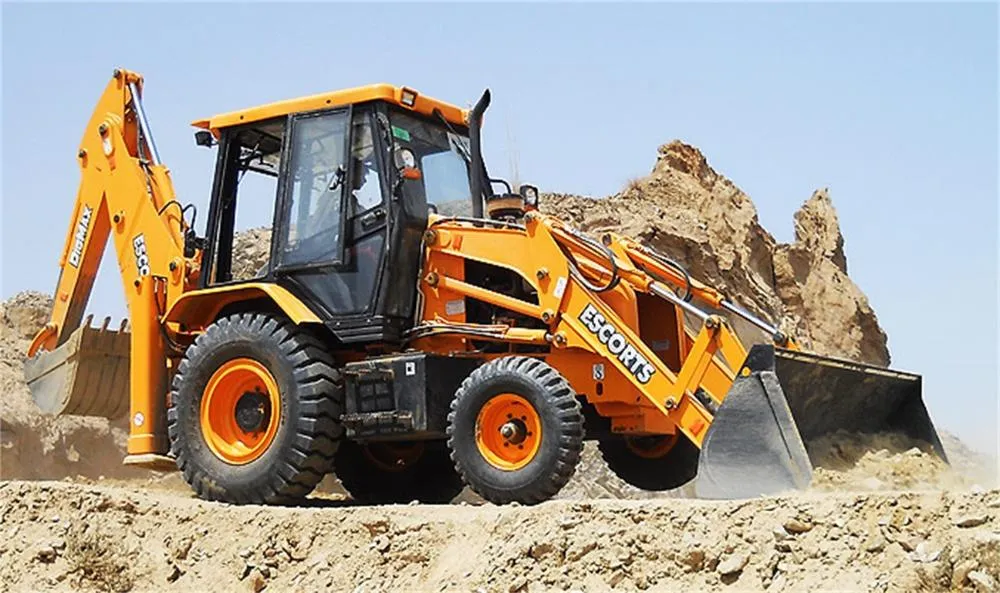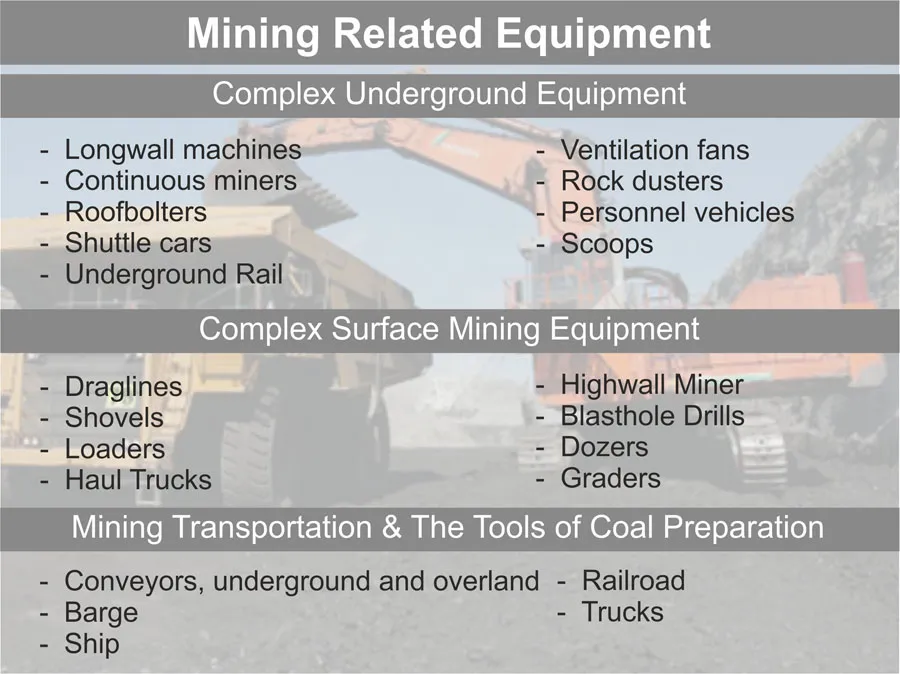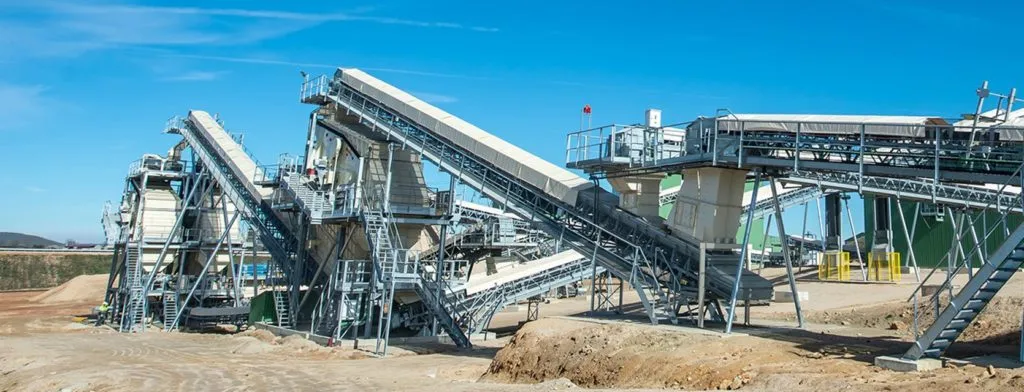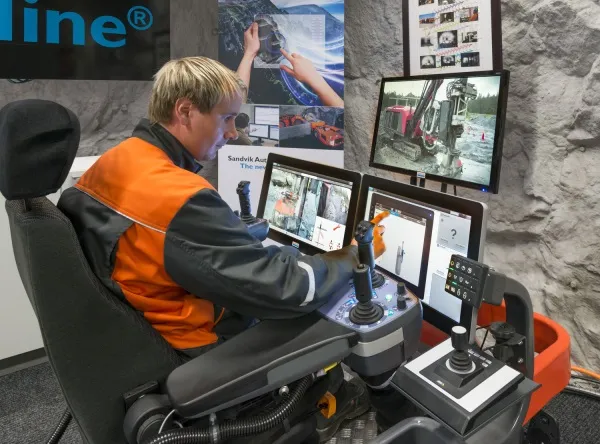Given the competitive landscape that is evolving the mining industry is seeing a demand for digging to greater depths. For mining companies to remain competitive, this will require further innovative designs and technologies that improve the capability, efficiency, and reliability of mining systems responsible for sensing, analyzing, extraction, and refinement. Manufacturers are now coping with the demand and coming with machines that fit the terrain requirements.
Discussed below are some most common types of equipment used in mining.
Mining drills
Accurate drilling helps make every other aspect of a mining operation smoother, safer and more productive. Even minor deviations from the pattern can have a big impact, with unevenly blasted material that is harder and more costly to handle, resulting in a higher cost per ton for the entire operation.
With high precision and more accurate depth tracking, autonomous drills can work far more accurately to plan. That means more accurate blasting and better-shot material, less time spent removing overburden, and higher productivity. New generation mining drills are available in a variety of feed lengths, boom configurations and carrier size class are productive solutions for all mining types. When you need to meet your drilling and blasting needs at the lowest cost per meter drilled, these powerful and reliable systems make P&H drills your best choice. The powerful and rugged rotary carriages can provide ample torque and bit loading through the toughest rock conditions in the world.
There has been the development of new-age underground jumbo drill rigs as well. The rigs are equipped with up to four booms, covering cross-sections. This comes with a reliable Direct Control System, DCS, or with the computerized Rig Control System to which different levels of automation may be added. Several models of the face drill rigs are available with an optional zero-emission battery-electric driveline.


Earthmovers
Various types of construction equipment are used in the mining sector such as hydraulic excavators, wheel loaders, backhoe loaders, bulldozers, dump trucks, tippers, graders, pavers, asphalt drum/wet mix plants, breakers, vibratory compactors, cranes, forklifts, dozers, off-highway dumpers, drills, scrapers, motor graders, rope shovels, etc. These equipment perform a variety of functions like preparation of the ground, excavation, haulage of material, dumping/laying in a specified manner, earthmoving, material handling, road construction etc. Among all the equipment employed in the mining sector, earth moving equipment is most widely used. Most used earthmoving equipment that is used to help move earth and excavate the land in mining are excavators, backhoe loaders and dump trucks.
The new generation excavator has a cab for an operator and can be driven using wheels, or the more familiar tracks. An excavator can be used for many types of construction jobs and fitted with special attachments most suitable for each project. Excavators are used in mining to remove earth and materials like coal. They work by digging with a hydraulic arm and hauling away with a bucket. Many different types of excavators are used in both small and large scale mining operations.
Backhoe Loaders are also employed in several mining works. Modern loaders are designed to achieve greater operating hours due to a robust structural design and modular components, provide the best possible fuel consumption levels due to the power regeneration capacity of the Hybrid Drive technology, and are equipped with the latest safety features that meet global requirements recognized by leading mining industry safety councils.
Dump trucks are also used as earth moving equipment in mining. Modern dump trucks come with customized cylinder engines designed to ensure excellent driving characteristics, high reliability and excellent fuel efficiency. The engine’s power is available virtually from idling speed, which ensures excellent starting traction. This power stays with you throughout and maximum torque is available high up the rev range A wide economic speed range of 1050-1600 rpm helps to get the maximum fuel efficiency.

Crushing Equipment
Modern crushing equipment is engineered to deliver the highest productivity in mines, quarries and civil engineering projects. We offer advanced, proven screening and crushing equipment for any size-reduction challenge. Whether you’re producing several sized aggregates or crushing tons of hard rock ore, modern equipment delivers the robustness and versatility you need.
From large primary jaws and gyrators to cone and impact crushers for tertiary and quaternary finishing, modern crushing equipment is manufactured to meet your material reduction requirements. The crushers are built to perform with the lowest cost per ton, featuring a unique combination of crusher cavity design, crushing forces, reliability and safety. Chambers with heavy, durable plates or jaws are the main components of most crushing equipment. After the raw material is fed into the crusher, the plates come together to reduce the size. These heavy-duty plates move both up and down, creating enough force and pressure to reduce the size of the material significantly. Crushing equipment is specially configured to break down the hard rock matter or gravel to a manageable size for transportation or conveying. They are valuable pieces of equipment in the industry because they reduce the costs associated with the handling of larger sized material and also ensure efficient liberation of elements of interest in downstream processing of the material
Belt Conveyors
Belt conveyors are used prolifically throughout the mining industry, carrying ores, concentrates, and tailings throughout every stage of the mining cycle, from initial excavation, through beneficiation, to the production of a refined material ready for market, and each step in between.
Belt conveyors are customized and combined in an endless array of configurations, making each handling system as unique as the material it carries. The diverse configurability of belt conveyors has made them essential in feeding process operations, transporting material to the storage, and navigating material through load-out. They can automate otherwise-arduous tasks, reduce labor requirements and human-material interaction, and effortlessly maneuver through difficult terrain and spatial restrictions. There are several types of conveyors, namely, in-plant, overland, pipe, shiftable, extendable and relocatable and underground.


Feeding equipment
When faced with the material of different sizes and densities, from dry and abrasive to wet and sticky, you can count on our feeders to efficiently and consistently convey it to the next stage in your process. Modern feeding equipment is engineered and designed with an intense commitment to quality and attention to detail, providing many years of service life.
In modern feeding equipment when the plate feeder works, the electromotor and the reducer drives the sprocket with alveolus structure to rotate, so that the hauling chain that engages with the chain wheel will drag the material through in which there are materials to move forward. The supporting device-hauling chain moves on the thrust wheel and the riding wheel props with the conveying through to bear the weight of the materials and the running devices. The materials are pushed from the storage bin above the tail to the conveying trough, and move along with it to the chute mouth with housing and then are discharged. Feeding equipment is ideally suited for feeding large, lumpy, abrasive and heavy materials during wet, sticky, or frozen operations. The rugged equipment and parts, as well as, carefully selected maintenance and optimization services are the preferred choice for material handling in minerals processing operations around the world.
Screening equipment
Screening equipment caters to any mineral processing application. From single-screen panels to double trommel screen configurations, modern equipment has screening equipment to suit your mineral processing requirements. Modern screens are injection moulded or hand casting a combination of high-quality materials. They are added with specialized aperture configurations which reduce pegging and blinding. Modern screens come in two different configurations: a sloped screen design, which is ideal for high-capacity sorting operations, and a linear screen design that allows the unit to double as a conveyor or feeder.
Modern models produce a unique gyratory vibration motion that creates a more even product distribution, and it can be extremely useful in separating materials with different shapes in different angles. The unit’s easy-tension screening material allows operators to make minute adjustments without extended downtime. These models of rectangular screeners and separators are designed and oriented to improve mining materials processes by separating different materials sizes as well as de-dusting mining materials from unwanted undersize particles.


Automated equipment
Apart from conventional equipment the need for precise details has enabled the need for automated equipment in mining. The advances in mining equipment are very promising. Incorporating automated systems that offer greater productivity, proposing new technologies to aid in the discovery and accurate quantifying of deposits, and systems capable of real-time analysis to increase efficiency and profitability, all stand to not only change but modernize the entire mining industry. Some of the pivotal ones are explained.
Drone – The new Elios drone is that it’s the first drone outfitted with a rotating carbon fiber protective frame, or cage, that protects the propellers, camera, and drone body from damage as well as keeping it stable in the air upon collision.
Blasting machine – New advancements in micro-explosives used in conjunction with computer-assisted-design and timing look promising to reduce the dangers associated with blasting. Using micro-explosives would also result in greater control fragment size – reducing the cost, time, and energy requirement for downstream crushing and grinding.
Battery operated drill rig – This capable of drilling blast patterns more quickly and accurately than any human or human operated equipment. Battery operated drill rigs, unlike their diesel or gas counterparts, don’t produce harmful exhaust fumes. Battery powered drill rigs also hold promise for lowering maintenance costs and if equipped with rapid chargers, or replaceable batteries, would contribute to the long-standing need of creating continuous mining operations.
Underground ore carriers – These are being outfitted with radar and laser scanners that allow them to navigate in the dark through areas that pose breathing hazards. Advancements in battery technology are leading to the development of battery electric vehicles (BEVs) for mining – both above and below ground.

Conclusion
The more reliable your equipment, the less likely you are to have to continually repair or replace it, saving you time and money. Not only can efficient mining equipment help to keep your business running seamlessly, but the right standards of equipment can also help to improve more than just the concerns of removing more material in less time and reducing costs. With the mining industry moving forward, technologically speaking, many of the systems surrounding the industry will require new skills and training. Workers will be required to possess a new set of skills needed to operate new machinery, new technology, or work along-side and support automated systems.
Image Source: mining.komatsu, sgakumbakonam.in, powerscreen.com, beltconveyors.in, mineral-processing.com, metso.com, mining-technology.com



Comments are closed.